Ready to Wear
Bernard Rudofsky was hard to please. A champion curmudgeon, the Moravia-born, Vienna-trained architect “disapprove[d] of many more things than the average person,” observed one of his long-time friends. Urban sidewalks were too hard on the feet, modern architecture was too hard on the eyes, and the way most people dressed, especially in America, was downright “stupid”—so stupid, in fact, that Rudofsky made a career out of highlighting its limitations.
In 1944, New York’s Museum of Modern Art hired him to organize an exhibition titled Are Clothes Modern? The answer, of course, was a big, loud “no!” Several intriguingly named installations on the first floor of 11 West 53rd Street—Excess and Superfluity, Abuse of Materials, and Revival of the Rational—explained why. Burdened with unnecessary ornamentation, contemporary mass-produced clothing was poorly made, physically constraining, and aesthetically unappealing, claimed the architect-turned-critic. Or, as Rudofsky himself would have it, modern-day dress was “useless, impractical, irrational, harmful and unbeautiful.” Take that, Seventh Avenue!
With its fierce and uncompromising sensibility, Are Clothes Modern? created quite a stir, prompting The New Yorker to stir things up even further by characterizing the exhibition as the “psychoanalysis of clothing.” But it was more than just a media sensation. A rallying cry, a call for “intelligent change,” Are Clothes Modern? encouraged Americans to “take the blinders of tradition off modern eyes” when they got dressed in the morning.
And yet, for all the publicity it garnered and the passion it provoked, Are Clothes Modern? never quite got around to defining “tradition”—with or without its blinders. More of a straw man than a substantive conceit, the relationship between “tradition” and dress remained an elusive one.
Many years later, it falls to Uncommon Threads, a current exhibition at the Yeshiva University Museum in New York of textiles and clothing drawn from its holdings, and The Jewish Wardrobe, a sumptuously illustrated catalog that marks the recent re-installation of the Israel Museum’s costume collection, to make clear how “tradition” affects what we wear and why. Both place history rather than pronouncements at the center of their respective narratives, linking modernity to the loss of distinctive, age-old sartorial practices.
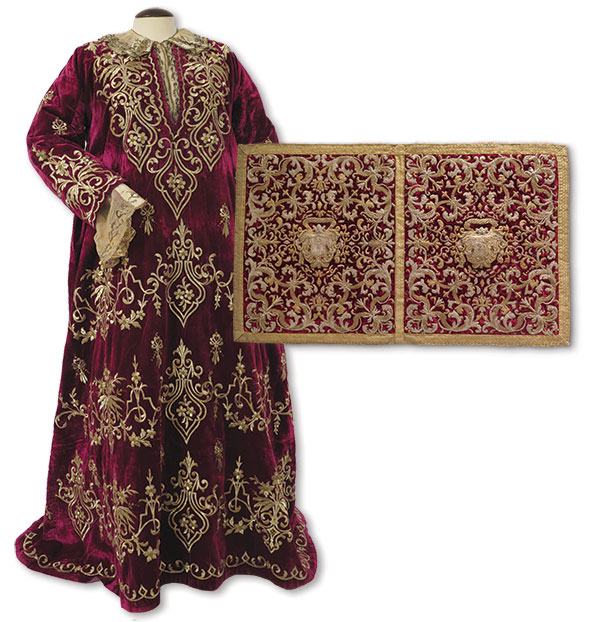
As much about ceremonial textiles as dress, Uncommon Threads features 39 objects with a broad geographical and temporal span that reaches from Gallipoli to Galicia and from the 18th through the 20th centuries. Dazzling displays of needlepoint, rich in metallic thread, adorn a mappa, a Torah cover, as well as a burgundy velvet bindalli, a Turkish wedding dress. Nation-building assumes the form of a flowing, black silk scarf adorned with oranges and the Israeli flag, courtesy of WIZO. American Judaism, for its part, takes the shape of an oversized, white tablecloth decorated with hand-drawn images, in blue ink, of a kiddush cup, the Ten Commandments, a box of matza, and a dreidel, courtesy of the Sisterhood of the Floral Park Jewish Center in Queens. A substantial gold bracelet belonging to the wife of the Hatam Sofer is also on display, as are a silver filigreed pair of tefillin cases, the handiwork of Bezalel in Jerusalem, and a collection of brass pins commissioned by Israel Bonds to raise money for the State of Israel. Dame Fashion, in turn, is represented by a series of blown-up sketches from the atelier of Adele Simpson, a leading Seventh Avenue designer of the postwar era—they happen to be the wittiest items in the show—as well as an ecru wedding gown, afloat in a sea of tulle, that was fabricated by the workers in Hattie Carnegie’s custom couture department as a gift for one of their own.
If your idea of a clothing exhibition is drawn from the Metropolitan Museum of Art’s Costume Institute or the Museum at the Fashion Institute of Technology in New York, Uncommon Threads is bound to disappoint. No bells and whistles, no state-of-the-art digital display, no thumping drama accompany this display. Modest to a fault, it quietly relishes, rather than trumpets, its treasures, putting one more in mind of a study collection that is temporarily brought into the light of day than a full-bore exhibition.
As a result of its low-key approach, Uncommon Threads demands a lot of its visitors—and of the items on display. Perhaps too much. The curatorial strategy of allowing objects to speak for themselves is fine and dandy, but at times it is simply not enough. In this instance, they, and we, could use a helping hand, rendering explicit the organizing principles and framing devices that animate this exhibition as well as acknowledging the criteria of inclusion that made room for some things, but not others. Was it a matter of aesthetic pleasure? Rarity? Durability? Unusual technique? A good yarn? Donor politics? Institutional history?
Without a clear-cut understanding of what is at stake, Uncommon Threads does not shine as brightly as it should. Or could: For nestled within the folds of its carefully and lovingly preserved textiles is a story worth telling—and telling forthrightly. It is the story of how modernity, for all its many blessings, often erases the practices and values of the collective, celebrating the individual at the expense of community and novelty or fashion at the expense of tradition.
Where Uncommon Threads is restrained, The Jewish Wardrobe, and, presumably, the installation on which it is based (which I have not seen), pulls out all the stops, visually as well as conceptually. As you turn the catalog’s pages, you can’t help marveling at the accumulated beauty of the items that populate it, as well as the galleries and storehouses of the Israel Museum, which counts nearly 10,000 items in its costume collection, much of it drawn from Western and Central Asia. Each artifact is more arresting than the next. The sequins on a wedding shawl from Bukhara shimmer, the punched gold coins of a festive cap from Tunisia glimmer, while a groom’s ensemble from Kurdistan, with its mix of pattern and texture, teases the eye.
What’s more, many of these items are unfamiliar, especially to those of us more inclined to associate clothing with Paris and New York than with Herat or Sana’a. Their unfamiliarity is rooted in both form and intent. For one thing, these articles of dress are unlike anything we are likely to have seen on the street. Ornamented to the nth degree, women’s clothing shields the body in such vast expanses of fabric, stacks so many necklaces around the neck, and piles so many bracelets on the arm, it’s a wonder a person could breathe, let alone move freely. Men’s clothing, too, is far more colorful and free-flowing than the somber silhouette fancied by Western males. For another thing, every article of clothing represented here, from tip to toe, was part and parcel of a world in which the manner of one’s appearance was not a private matter, much less a response to market forces, but a communal imperative. When it came to getting dressed, tradition—a blend of custom, Jewish law, and externally imposed regulations—called the shots, not Dame Fashion. Enjoined by Christian and Muslim authorities from wearing bright colors or compelled to wear a woolen cape inside out, the Jews transformed these marks of degradation into an expression of communal cohesion.
The frisson of surprise as well as the visual pleasure you derive from making your way through The Jewish Wardrobe are akin to the experience of leafing through back issues of National Geographic. Here, too, the deft deployment of photography is key. The camera zooms in on the most intricate of details, enabling the reader to conjure up the lush velvet nap of a bar mitzvah coat from Uzbekistan or the heft of a clutch of metal necklaces. That a goodly number of the items are complemented by black and white prints of real people wearing them, furnishing what the catalog calls “social context,” enriches their presence. Even though the compromising ethnographic circumstances in which many of these images were first taken (how quaint, how curious, how oriental!) never lose their sting, their purposeful juxtaposition with the artifacts themselves enhances their meaning, reminding us that these museum-ified things once had a life.
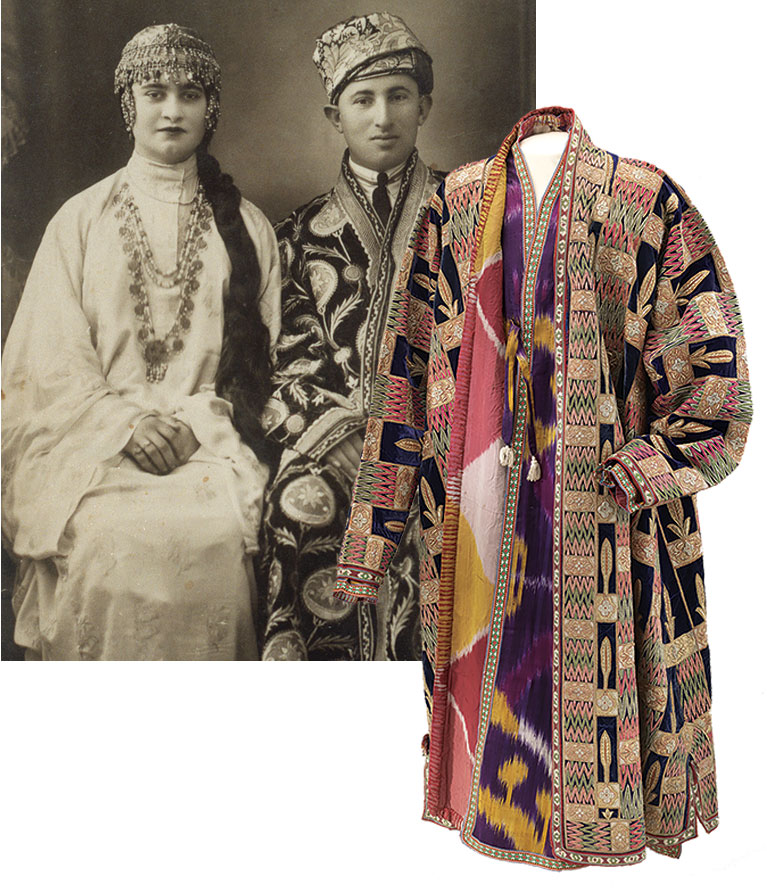
Empathy and visual pleasure, though, are not the only goals of The Jewish Wardrobe. It has a point to make, or, better yet, a score to settle—with modernity. A series of tantalizingly brief meditations on topics that range from the relationship between halakha and attire and the impact of dress reform to the social realities that informed the Israel Museum’s collections policies bring home its intellectual agenda. These essays, written largely by Esther Juhasz, the catalog’s editor, help us to understand how a concatenation of forces—modernization, new-found economic challenges, generational tension, and, above all, the urgency and speed with which modern Israeli culture came into being—led to the abandonment, the casting off, of traditional dress, and its devaluation as old-fashioned, the stuff of embarrassment. At best, once-familiar items were reconstituted as “costume.” At worst, they were given the heave-ho.
For all of its glories, then, The Jewish Wardrobe leaves the reader feeling sad, even wistful, at the exactions of modernity. You put it down, flush with a new-found awareness of the costs of living in a world that would banish a bindalli from one’s wardrobe, only to plant it within the confines of a display case.
Just the other day, I learned that the Museum of Modern Art is in the process of revisiting Are Clothes Modern? Come fall 2017, it will launch Items: Is Fashion Modern?, its first clothing show in over 70 years. At once an homage to Rudofsky’s exhibition of 1944 and an elaboration, an expansion, of its intellectual scaffolding, it looks closely at the garments, accessories, and design elements that have stood the test of time, leaving an “indelible mark” on the 20th and 21st centuries: the little black dress, the turtleneck, the white T-shirt, and the zipper. Oh, and the kippa and the keffiyeh, too.
When I first heard about the museum’s plans, my immediate response was: “What would Rudofsky think? Would he be pleased?” I would like to think so.
Suggested Reading
Cognitive Dissonance
Gordis replies to his critics and outlines his positive vision for the future. His proposal may surprise you.
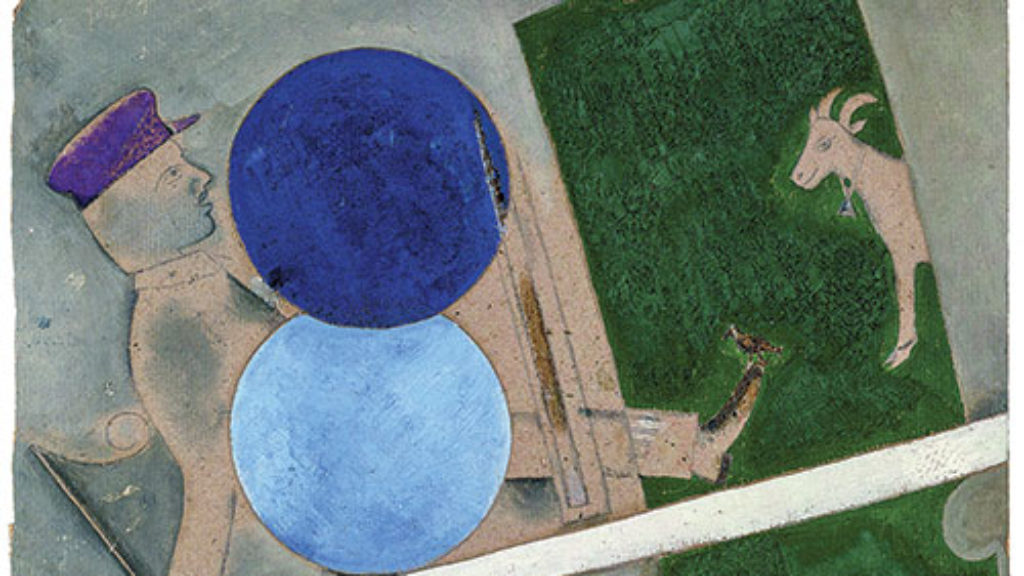
Art Over Vitebsk
After the revolution, Marc Chagall—somewhat implausibly—became plenipotentiary for the affairs of art in the province of Vitebsk. Against all probability, the avant-garde bloomed in a provincial Russian city dominated by Jewish culture.
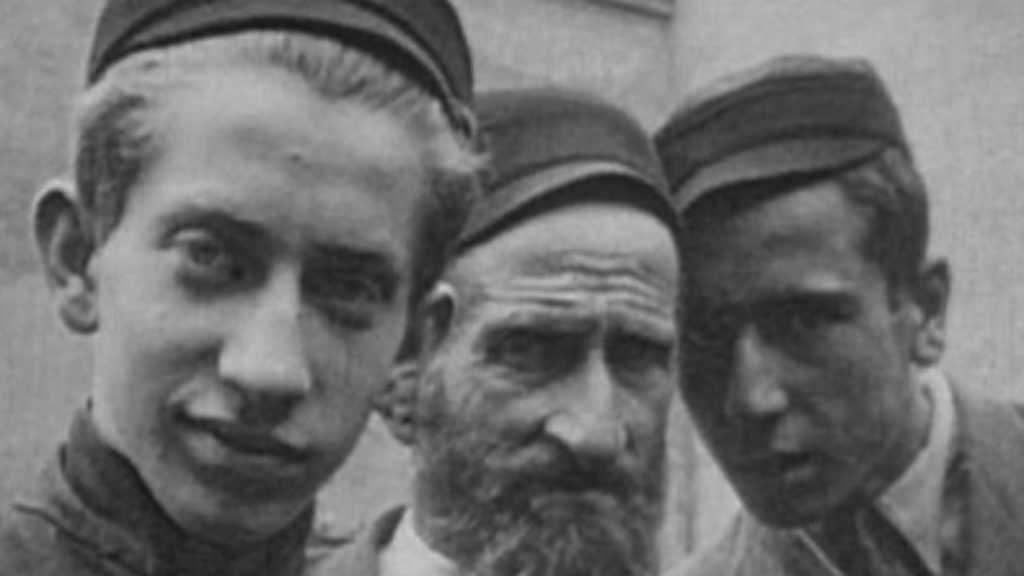
Living Postcards
YIVO/Yeshiva University Museum's recent exhibit of pre-war home videos provides an extraordinary view into the lives of ordinary people.
Politics and Anti-Politics
Michael Walzer asks new questions of the biblical text, the same sorts of questions we often ask of Locke or Voltaire.
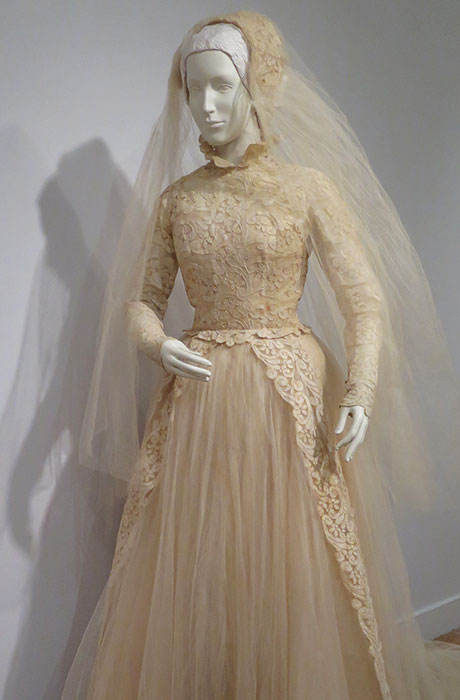
Comments
You must log in to comment Log In